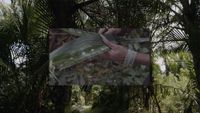

A "calling" originally refers to a person, as a medium, being guided by the authority of some higher will, wisdom, or power, whose consciousness receiving divine will, hitherto giving one's words and actions a more self-evident justification and irrefutable legitimacy. This notion and literature on the "calling" can be found across traditional cultures around the world, such as "effectual calling," "Tí Hú Guàn Dǐng (being filled with wisdom)," or "heavenly mandate", etc.
Despite living in a generally secularised world today, people's "mystical" experience of a "calling" has not disappeared due to fading religious dominance. On the contrary, people often cling to believing in this irresistible experience beyond sufficient reason, resulting in contradictory words and actions that lead to conflicts and crises.
With this in mind, the exhibition A Higher Calling inquires, in a contemporary context, how the experience of a "calling," both physical and mental involuntary, takes place? If we look beyond religion and the occult, can we map out the mechanisms by which "calling" arises and operates? In 1998, the sociologist C. Sommerville concluded that, on a macro-sociological level, "secularisation", or "differentiation", is a process by which all spheres of society (including economic, political, legal, and mor- al) become increasingly divided and different from one another. At the same time, individuals and groups at the micro-level are also affected by differentiation.
Therefore, can we conceive the "calling" under secularisation as a specific conscious experience in a differentiated society? Suppose people's consciousness and actions are shaped by their differentiation from each other. Are the existence of differentiation itself and the differentiated interpersonal interactions the reasons for people's undeniable ways of speaking and acting? Moreover, would any adjustment to differentiation imply a changed experience of "calling"? Suppose we can effectively understand and apply this mechanism and process, can we somehow reconcile the differences be- tween words and actions brought about by the "calling" and thus better face the increasingly turbulent and crisis-ridden times?
Press release courtesy White Space.
White Space Beijing
No 255 Caochangdi, Airport Service Road
Chaoyang District
100015, Beijing
China
www.whitespace.cn
+86 10 8456 2054
+86 10 8456 2749 (Fax)
Tuesday–Sunday: 10am–6pm